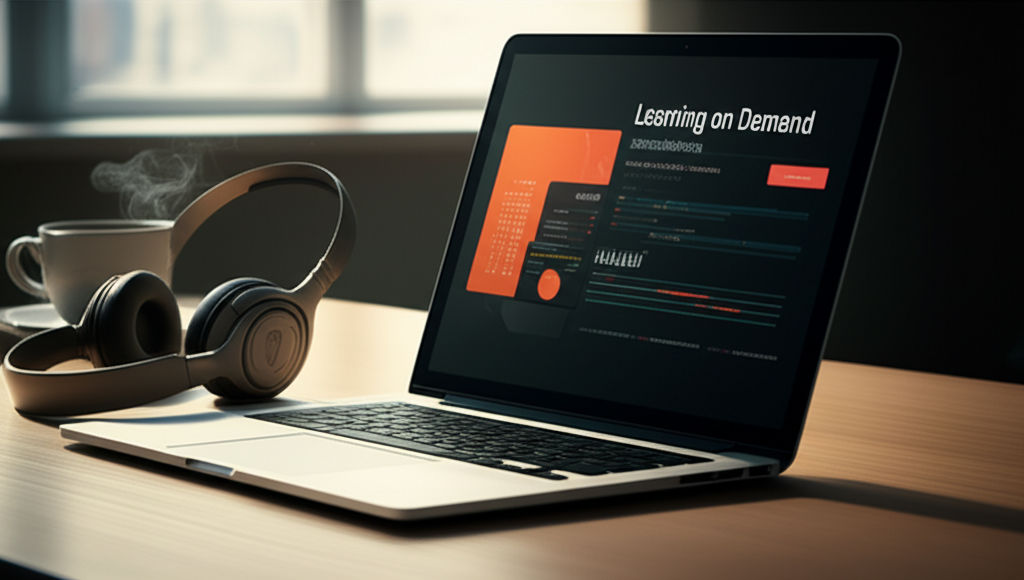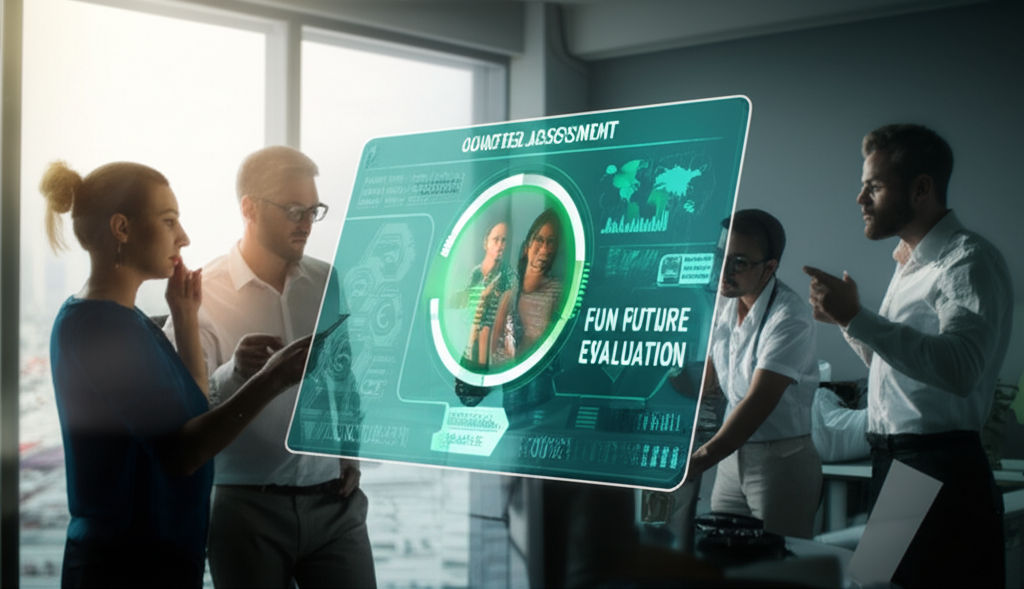Learning on Demand: Instant Knowledge Access
Emily Willis

Photo: Learning on Demand: Instant Knowledge Access
Unlock Your Potential: The Power of Learning on Demand and Instant Knowledge Access
In today's fast-paced world, change is the only constant. New technologies emerge, industries transform, and the skills needed to thrive are constantly evolving. This dynamic environment has given rise to a revolutionary approach to personal and professional development: Learning on Demand and Instant Knowledge Access. Gone are the days when learning was confined to traditional classrooms or rigid schedules. Now, knowledge is at our fingertips, ready to be absorbed precisely when and where we need it.
This article will explore the incredible power of on-demand learning, how it's reshaping our lives and careers, and provide actionable insights to help you harness its full potential.
What Exactly is Learning on Demand?
At its core, Learning on Demand (often referred to as "Just-in-Time Learning") is about acquiring knowledge or skills precisely when they are needed to complete a task, solve a problem, or seize an opportunity. Think of it as having a personal tutor or an entire library available 24/7, ready to answer your questions or teach you a new skill the moment you realize you need it.
Unlike traditional "just-in-case" learning, where you might spend hours in a classroom learning information you might need someday, on-demand learning is highly targeted and practical. It's self-paced, allowing you to control your learning journey, speeding through familiar topics and slowing down for more challenging ones. This approach significantly improves knowledge retention because you're applying what you learn immediately, making the information stick.
This modern approach to education has its roots in concepts like Toyota's "Just-in-Time" manufacturing, where resources are only acquired when needed, minimizing waste and maximizing efficiency. Applied to learning, this means no more wasted time on irrelevant content, only focused, impactful skill acquisition.
The Rise of Instant Knowledge Access: Why Now?
The explosion of Instant Knowledge Access isn't a coincidence; it's the natural evolution of learning, fueled by several key factors:
- Technological Advancements: The widespread availability of high-speed internet, powerful mobile devices, and sophisticated learning platforms has made vast amounts of information accessible anytime, anywhere. AI-powered learning systems are even revolutionizing content delivery, offering personalized experiences and real-time feedback.
- Changing Job Market: Industries are transforming at an unprecedented pace, creating a constant need for upskilling and reskilling. Employers increasingly value specific, in-demand skills, and on-demand learning platforms are uniquely positioned to provide them. A recent survey indicated that 66% of workers aged 18-24 rank learning new skills as the third-most important perk when evaluating new job opportunities.
- Personal Desire for Growth: People are more eager than ever to take control of their personal and professional development. The flexibility and convenience of on-demand learning cater to this desire for continuous self-improvement.
The global e-learning market is experiencing substantial growth, projected to reach nearly $400 billion by 2026, with a compound annual growth rate (CAGR) of 14% between 2023 and 2032. This incredible expansion underscores the growing recognition of digital learning as a vital tool for career development and lifelong learning.
The Benefits of Embracing On-Demand Learning
Embracing on-demand learning offers a wealth of advantages for individuals looking to stay relevant and competitive:
- Flexibility and Convenience: Learn whenever and wherever it suits your schedule – during your commute, over lunch, or late at night. This adaptability is especially beneficial for busy professionals or those with unpredictable workloads.
- Personalized Learning Paths: On-demand platforms often allow you to tailor your learning experience to your specific needs and interests. You can focus on exactly what you need to know, without sifting through irrelevant material.
- Cost-Effectiveness: Compared to traditional degree programs or extensive seminars, many on-demand resources are affordable or even free, making high-quality education accessible to a broader audience.
- Rapid Skill Acquisition: Because the learning is targeted and often bite-sized, you can acquire new skills much faster and apply them immediately. This "just-in-time" approach enhances retention and performance.
- Enhanced Career Mobility: Acquiring new skills through digital learning can significantly impact career advancement. It can help you stand out in a competitive job market, open doors to new opportunities, and even facilitate career transitions.
Navigating the World of On-Demand Learning: Your Toolkit
The sheer volume of available resources can be overwhelming. Here's your toolkit for making the most of instant knowledge access:
Popular Platforms and Resources
The digital landscape is rich with platforms designed for on-demand learning:
- Online Course Platforms:
- Coursera: Partners with top universities and organizations, offering accredited certificates and degrees.
- edX: Similar to Coursera, offering university-level courses.
- Udemy: Features a vast library of courses taught by independent instructors, covering diverse topics from professional development to hobbies.
- LinkedIn Learning: Excellent for professional skill-building, offering video courses by industry experts in business, technology, and creative fields.
- Skillshare: Focuses on creative topics like art, design, and writing, often with a subscription model.
- Khan Academy: Offers free academic learning across various subjects.
- MasterClass: Provides high-quality video tutorials from renowned experts in various fields.
- Microlearning Apps: These deliver bite-sized content, perfect for quick learning bursts. Think language apps, flashcard systems, or quick tutorials.
- Video Tutorials: YouTube remains an invaluable resource for learning almost anything, from fixing a leaky faucet to mastering complex software.
- Podcasts & Audiobooks: Perfect for learning on the go, turning commute time into productive learning sessions.
- Digital Libraries & Databases: Many public libraries offer free access to extensive online resources, including e-books, research databases, and even online courses.
Strategies for Effective On-Demand Learning
To truly benefit from self-paced learning, strategic engagement is key:
- Define Your Goals: Before diving in, ask yourself: What specific skill do I want to acquire? What problem am I trying to solve? Clear objectives will help you choose the right resources and stay focused.
- Choose the Right Resources: Not all online content is created equal. Look for platforms and instructors with good reviews, clear learning outcomes, and content that matches your learning style. Consider the source's expertise, authoritativeness, and trustworthiness (E-A-T).
- Create a Learning Routine: Even with flexibility, a schedule provides structure. Allocate specific times for learning, just as you would for traditional classes. This helps combat procrastination.
- Establish a Productive Learning Environment: Find a quiet, comfortable space free from distractions. Minimize notifications on your devices to maintain focus.
- Practice and Apply: The most effective learning happens when you apply what you've learned. Look for opportunities to immediately use your new knowledge or skills in real-world scenarios. This reinforces retention.
- Stay Motivated and Accountable: Self-paced learning requires discipline. Consider setting short-term goals, tracking your progress, or even finding a learning buddy to stay accountable. Reward yourself after completing "chunks" of learning to maintain momentum.
- Engage and Interact: Even in online settings, seek virtual interactions. Participate in forums, group chats, or virtual study groups to deepen your understanding and connect with peers.
- Take Regular Breaks: "Chunking" your learning time into manageable units with short breaks can significantly boost focus and energy, preventing information overload.
Overcoming Challenges in Your On-Demand Learning Journey
While the benefits are many, on-demand learning isn't without its hurdles. Being aware of these common challenges can help you navigate them effectively:
- Information Overload: The sheer volume of available content can be overwhelming, leading to "choice paralysis" and difficulty in deciding where to start.
- Solution: Stick to your defined goals. Use reputable platforms and trusted sources. Don't try to learn everything at once; focus on one skill or topic at a time.
- Lack of Structure and Motivation: Without fixed deadlines or a physical classroom, it's easy to procrastinate or lose momentum.
- Solution: Implement the strategies mentioned above: set a schedule, break tasks into smaller "chunks," track progress, and find accountability partners.
- Quality Control of Resources: The internet is full of information, but not all of it is accurate or high-quality.
- Solution: Prioritize well-known, reputable platforms and content creators. Check reviews, credentials, and ensure the information is current and relevant.
- Limited Interaction and Feedback: Some self-paced courses may lack real-time interaction with
Latest ✨
View AllDitch stressful tests! Gamified assessment makes evaluations fun, fair & future-ready. Unlock true potential with engaging, insightful methods.
Emily Willis
secrets to mastering your business financial plan with five simple steps. Learn how to analyze financial data, set measurable goals, and create a comprehensive strategy for success. Unlock profitability, make confident decisions, and ensure a bright future for your business
Emily Willis
Europe is full of rich culture, with ten cities offering enriching cultural experiences. From the romance of Paris to the splendor of Rome and the artistic flair of Barcelona, each city has its own unique charm and heritage.
Emily Willis
invitation to go on a wildlife safari through Kenya, Tanzania, and Australia. It describes the unique wildlife encounters in each country, such as witnessing the Great Migration in Kenya, exploring the Serengeti in Tanzania, and encountering koalas and kangaroos in Australia.
Emily Willis
Business
View All
June 9, 2025
Innovation Strategy for Future BusinessInnovation is vital for future business success. Learn why a robust strategy ensures survival, growth, and competitiveness in a changing world.
Emily Willis

June 8, 2025
Importance of Corporate GovernanceCorporate governance isn't just for boardrooms. Understand its vital role in ethical business, trust, and sustainable growth for all stakeholders.
Emily Willis

June 9, 2025
Succeed with SaaS Business ModelMaster the SaaS business model! This guide reveals strategies for building a thriving enterprise, from understanding the landscape to achieving product-market f...
Emily Willis
Economy
View AllUnpack the immense power of central banks and how they're held accountable for shaping the economy and your financial life.
Read MoreTechnology is now an integral part of our daily lives and economies, driving innovation, boosting productivity, and fueling economic growth. It streamlines research and development, facilitates collaboration, automates mundane tasks, and democratizes innovation.
Read MoreThe inflation threat explained. Understand its causes and discover effective cures to protect your purchasing power and navigate economic challenges.
Read MoreEntertainment
View All
August 5, 2024
Classic Films: Timeless Masterpieces in the Age of StreamingClassic films may seem outdated in today's world of instant gratification and endless streaming options, but they offer enduring stories, masterful storytelling, historical insights, technical innovation, and artistic value that surpass modern offerings. While classic films face challenges such as accessibility and pacing, there are ways to overcome these obstacles, such as using streaming services, visiting local libraries, attending film festivals, and utilizing online resources.
Emily Willis

August 4, 2024
The Latest Music Trends, Artists Influencing Pop Culture, and How Digital Platforms Facilitate the Distribution of Music GloballyThe music industry is constantly changing due to consumer preferences, technology, and the influence of artists. Digital platforms have revolutionized music creation, distribution, and consumption, leading to genre fusion, the rise of independent artists, and collaborative projects. Influential artists like Billie Eilish, BTS, and Taylor Swift have shaped pop culture globally. Streaming services, social media, and direct-to-fan engagement have transformed music distribution. Digital platforms also promote cultural diversity and inclusivity, expand markets and revenue, and drive technological advancements. The industry is also focusing on sustainability and ethical practices. To succeed in the future, stakeholders must embrace digital transformation and champion inclusivity.
Emily Willis

August 5, 2024
Entertainment in Society: Social Impact, Cultural Influence, Economic ContributionsEntertainment is more than just a way to pass the time it has a significant impact on society, culture, and the economy. It promotes empathy, sparks conversations, and drives social change. It reflects and shapes cultural trends, while also preserving traditions. The entertainment industry generates jobs, contributes to economic growth, and drives technological innovation.
Emily Willis
Health
View AllRegular exercise is essential for maintaining both physical and mental health. It helps with weight management, cardiovascular health, muscle strength, energy levels, and sleep quality. Exercise also reduces stress and anxiety, improves mood, cognitive function, and self-esteem, and lowers the risk of depression. Different types of exercises, such as aerobic, strength training, flexibility, balance, and mind-body exercises, contribute to overall health. To start and maintain an exercise routine, it is important to start slowly, set realistic goals, find enjoyable activities, stay consistent, and listen to your body.
Emily Willis
Maintaining good health involves a balanced diet that provides essential nutrients for the body. A balanced diet includes carbohydrates, proteins, fats, vitamins, minerals, fiber, and water. Benefits of a balanced diet include enhanced energy levels, improved mental health, a stronger immune system, better weight management, reduced risk of chronic diseases, and enhanced digestion. Components of a balanced diet include fruits and vegetables, whole grains, protein sources, dairy or dairy alternatives, and healthy fats. Tips for maintaining a balanced diet include planning meals, portion control, staying hydrated, limiting processed foods, eating mindfully, and including physical activity.
Emily Willis
sleep for physical and mental well-being, discussing the benefits of sleep such as physical restoration, brain function, emotional regulation, concentration, and reduced risk of chronic diseases. It explains the different stages of the sleep cycle and provides guidelines for how much sleep individuals of different ages need.
Emily Willis
Trending 🔥
View All
1
2
3
4
5
6
7
8
9
10
Sports
View AllAugust 5, 2024
Celebrating Sports Legends: Honoring Iconic Figures and Their Enduring Impact
Read MoreAugust 4, 2024
The Importance of Mental Training and Psychological Strategies in Helping Athletes Reach Their Peak Performance on the Field
Read MoreTechnology
View All
August 4, 2024
AI-Powered Robots Take Over Manufacturing Jobs: Is Our Workforce Prepared?
AI-powered robots are transforming the manufacturing industry, leading to increased efficiency and improved product quality. While concerns about job displacement exist, AI is more likely to transform jobs rather than eliminate them.

August 5, 2024
Challenges and Opportunities in Implementing IoT Technology
The Internet of Things (IoT) is revolutionizing industries by enabling real-time monitoring, automation, and decision-making. However, implementing IoT technology comes with challenges such as security concerns, interoperability issues, data management, scalability, and cost. Despite these challenges, IoT offers opportunities for operational efficiency, enhanced customer experience, innovation, environmental sustainability, and business intelligence.

August 5, 2024
Tips for Keeping Your Personal Data Safe on the Internet
The digital age has made personal data more vulnerable to threats such as phishing, hacking, identity theft, and data breaches. To protect yourself, it is important to create strong passwords, be cautious of phishing attacks, secure your devices, safeguard your personal information online, practice safe online shopping and banking, protect your social media accounts, and stay informed about cybersecurity threats.

August 5, 2024
The Future of Cybersecurity and Upcoming Challenges
cybersecurity in the digital age, highlighting key trends and challenges that will shape the future of cybersecurity. It addresses issues such as the increased use of AI and ML, the growth of IoT devices, ransomware attacks, cloud security, and supply chain attacks. It also outlines upcoming challenges in cybersecurity, including talent shortage, regulatory compliance, cybersecurity for remote work, quantum computing, and social engineering attacks.





















